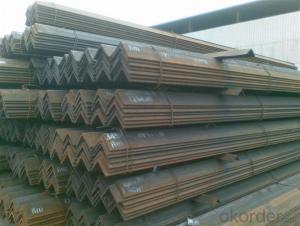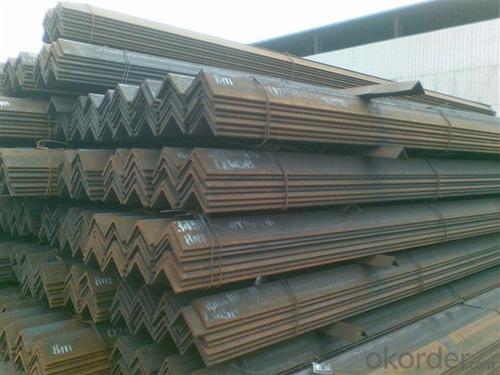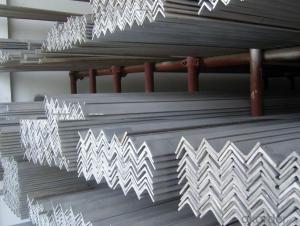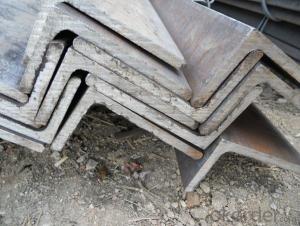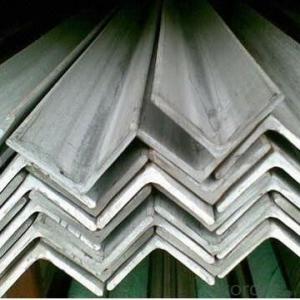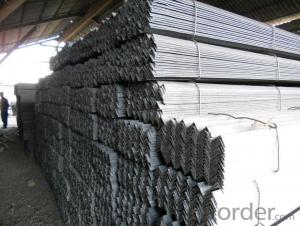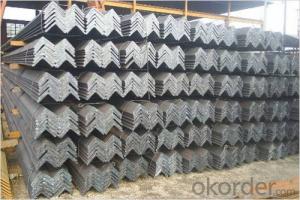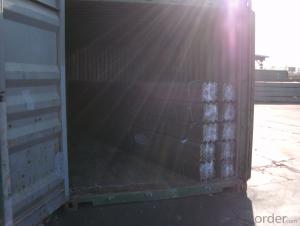Equal Angle steel Hot rolled in Steel Angles Q235, Q345
- Loading Port:
- Tianjin
- Payment Terms:
- TT or LC
- Min Order Qty:
- 25 m.t.
- Supply Capability:
- 40000 m.t./month
OKorder Service Pledge
OKorder Financial Service
You Might Also Like
Product Description:
OKorder is offering Equal Angle steel Hot rolled in Steel Angles Q235, Q345 at great prices with worldwide shipping. Our supplier is a world-class manufacturer of steel, with our products utilized the world over. OKorder annually supplies products to European, North American and Asian markets. We provide quotations within 24 hours of receiving an inquiry and guarantee competitive prices.
Product Applications:
Equal Angle steel Hot rolled in Steel Angles Q235, Q345 are ideal for structural applications and are widely used in the construction of buildings and bridges, and the manufacturing, petrochemical, and transportation industries.
Product Advantages:
OKorder's Equal Angle steel Hot rolled in Steel Angles Q235, Q345 are durable, strong, and resist corrosion.
Main Product Features:
· Premium quality
· Prompt delivery & seaworthy packing (30 days after receiving deposit)
· Corrosion resistance
· Can be recycled and reused
· Mill test certification
· Professional Service
· Competitive pricing
Product Specifications:
1.High quality
2.Suitable price
3.Factory provide directly.
4.Size: 2#-20# /4.5#-20#
Standard:AISI,ASTM,GB,JIS
Dimensions:
1. Equal Angle: 25*25*3mm- 200*200*14/16/18/20mm
2.Unequal Angle: 45*30*4mm-200*125*12/14/16/18mm
Grade:Q235-Q345 Series
Angle steel: equal/Unequal angle bar
Hot rolled angle steel
Material:Q235 Q345
Size:
1. Equal Angle: 25*25*3mm- 200*200*14/16/18/20mm
2.Unequal Angle: 45*30*4mm-200*125*12/14/16/18mm
length: 6m 9m 12m or as urs
packages:2 tons per bundles
Equal angle steel, hot rolled angle steel, steel angle
| Dimension (mm) | Weight(kg/m) | Dimension (mm) | Weight(kg/m) |
| 20*3 | 0.89 | 80*10 | 11.87 |
| 20*4 | 1.15 | 90*6 | 8.35 |
| 25*3 | 1.12 | 90*7 | 9.66 |
| 25*4 | 1.46 | 90*8 | 10.95 |
| 30*3 | 1.37 | 90*10 | 13.48 |
| 30*4 | 1.79 | 90*12 | 15.94 |
| 36*3 | 1.66 | 100*6 | 9.37 |
| 36*4 | 2.16 | 100*7 | 10.83 |
| 36*5 | 2.65 | 100*8 | 12.28 |
| 40*3 | 1.85 | 100*10 | 15.12 |
| 40*4 | 2.42 | 100*12 | 17.9 |
| 40*5 | 2.98 | 100*14 | 20.61 |
| 45*3 | 2.09 | 100*16 | 23.26 |
| 45*4 | 2.74 | 110*7 | 11.93 |
| 45*5 | 3.37 | 110*8 | 13.53 |
| 45*6 | 3.99 | 110*10 | 16.69 |
| 50*3 | 2.33 | 110*12 | 19.78 |
| 50*4 | 3.06 | 110*14 | 22.81 |
| 50*5 | 3.77 | 125*8 | 15.5 |
| 50*6 | 4.46 | 125*10 | 19.13 |
| 56*3 | 2.62 | 125*12 | 22.7 |
| 56*4 | 3.45 | 125*14 | 26.19 |
| 56*5 | 4.25 | 140*10 | 21.49 |
| 56*8 | 6.57 | 140*12 | 25.52 |
| 63*4 | 3.91 | 140*14 | 29.49 |
| 63*5 | 4.82 | 140*16 | 33.39 |
| 63*6 | 5.72 | 160*10 | 24.73 |
| 63*8 | 7.47 | 160*12 | 29.39 |
| 63*10 | 9.15 | 160*14 | 33.99 |
| 70*4 | 4.37 | 160*16 | 38.52 |
| 70*5 | 5.4 | 180*12 | 33.16 |
| 70*6 | 6.41 | 180*14 | 38.38 |
| 70*7 | 7.4 | 180*16 | 43.54 |
| 70*8 | 8.37 | 180*18 | 48.63 |
| 75*5 | 5.82 | 200*14 | 42.89 |
| 75*6 | 6.91 | 200*16 | 48.68 |
| 75*7 | 7.98 | 200*18 | 54.4 |
| 75*8 | 9.03 | 200*20 | 60.06 |
| 75*10 | 11.09 | 200*24 | 71.17 |
| 80*5 | 6.21 | ||
| 80*6 | 7.38 | ||
| 80*7 | 8.53 | ||
| 80*8 | 9.66 |
unequal anlge steel is also ok for us
| Dimension (mm) | Weight(kg/m) | Dimension (mm) | Weight(kg/m) |
| 25*16*3 | 0.91 | 100*63*6 | 7.55 |
| 25*16*4 | 1.18 | 100*63*7 | 8.72 |
| 32*20*3 | 1.17 | 100*63*8 | 9.88 |
| 32*20*4 | 1.52 | 100*63*10 | 12.1 |
| 40*25*3 | 1.48 | 100*80*6 | 8.35 |
| 40*25*4 | 1.94 | 100*80*7 | 9.66 |
| 45*28*4 | 1.69 | 100*80*8 | 10.9 |
| 45*28*5 | 2.2 | 100*80*10 | 13.5 |
| 50*32*3 | 1.91 | 110*70*6 | 8.35 |
| 50*32*4 | 2.49 | 110*70*7 | 9.66 |
| 56*36*3 | 2.15 | 110*70*8 | 10.9 |
| 56*36*4 | 2.82 | 110*70*10 | 13.5 |
| 56*36*5 | 3.47 | 125*80*7 | 11.1 |
| 63*40*4 | 3.19 | 125*80*8 | 12.6 |
| 63*40*5 | 3.92 | 125*80*10 | 15.5 |
| 63*40*6 | 4.64 | 125*80*12 | 18.3 |
| 63*40*7 | 10 | 140*90*8 | 14.2 |
| 70*45*4 | 3.57 | 140*90*10 | 17.5 |
| 70*45*5 | 4.4 | 140*90*12 | 20.7 |
| 70*45*6 | 5.22 | 140*90*14 | 23.9 |
| 70*45*7 | 6.01 | 160*100*10 | 19.9 |
| 75*50*5 | 4.81 | 160*100*12 | 23.6 |
| 75*50*6 | 5.7 | 160*100*14 | 27.2 |
| 75*50*8 | 7.43 | 160*100*16 | 30.8 |
| 75*50*10 | 9.1 | 180*110*10 | 22.3 |
| 80*50*5 | 5 | 180*110*12 | 26.5 |
| 80*50*6 | 5.93 | 180*110*14 | 30.6 |
| 80*50*7 | 6.85 | 180*110*16 | 34.6 |
| 80*50*8 | 7.75 | 200*125*12 | 29.8 |
| 90*56*5 | 5.66 | 200*125*14 | 34.4 |
| 90*56*6 | 6.72 | 200*125*16 | 39 |
| 90*56*7 | 7.76 | 200*125*18 | 43.6 |
| 90*56*8 | 8.78 |
FAQ:
Q1: Why buy Materials & Equipment from OKorder.com?
A1: All products offered byOKorder.com are carefully selected from China's most reliable manufacturing enterprises. Through its ISO certifications, OKorder.com adheres to the highest standards and a commitment to supply chain safety and customer satisfaction.
Q2: How do we guarantee the quality of our products?
A2: We have established an advanced quality management system which conducts strict quality tests at every step, from raw materials to the final product. At the same time, we provide extensive follow-up service assurances as required.
Q3: How soon can we receive the product after purchase?
A3: Within three days of placing an order, we will begin production. The specific shipping date is dependent upon international and government factors, but is typically 7 to 10 workdays.
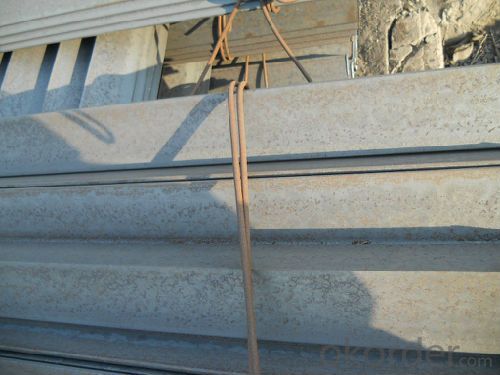
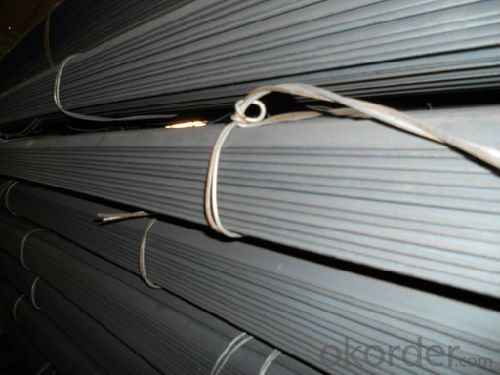
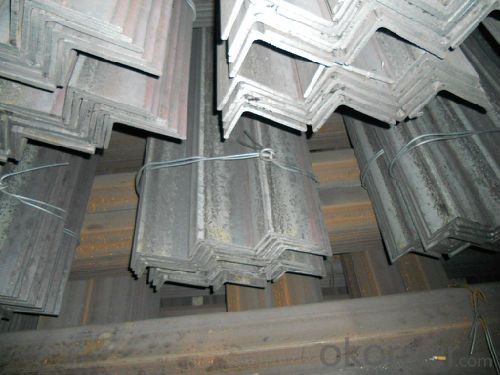
- Q: Can steel angles be used for modular furniture or fixtures?
- Yes, steel angles can definitely be used for modular furniture or fixtures. Steel angles are versatile and strong structural components that can be easily incorporated into modular furniture designs. They provide stability and support to the overall structure, making them ideal for creating modular pieces that are sturdy and durable. Steel angles can be used as corner brackets or supports for shelves, cabinets, or other modular components. They can be easily cut, welded, or drilled to fit specific design requirements, allowing for flexibility in creating different configurations or sizes of modular furniture. Additionally, steel angles can be powder coated or painted in different colors to match the desired aesthetic of the furniture or fixtures. The use of steel angles in modular furniture or fixtures also ensures longevity, as they are resistant to wear and tear, corrosion, and impact. This makes them suitable for both indoor and outdoor applications. Moreover, steel angles are readily available and cost-effective, making them a practical choice for modular furniture or fixture manufacturing. In conclusion, steel angles are an excellent choice for creating modular furniture or fixtures due to their strength, versatility, and durability. They provide stability and support to the structure, can be easily customized, and offer long-lasting performance. Whether it is for residential or commercial use, steel angles can be utilized to create modular furniture or fixtures that are both functional and aesthetically pleasing.
- Q: Can steel angles be used for support columns in building construction?
- Steel angles can indeed be utilized as support columns in building construction. Their strength, durability, and versatility render them frequently employed in construction. When employed as columns, they offer exceptional support and stability, particularly in structures of small to medium size. Furthermore, steel angles can be easily fabricated and tailored to satisfy precise design criteria. They also boast resistance against fire, corrosion, and pests, signifying their dependability as support columns in building construction.
- Q: Can steel angles be used for cable trays?
- Yes, steel angles can be used for cable trays. Steel angles provide structural support and stability, making them suitable for holding cable trays securely in place. They are commonly used in cable tray installations due to their strength and durability.
- Q: Can steel angles be used in load-bearing columns?
- Load-bearing columns can indeed utilize steel angles. Construction frequently incorporates steel angles due to their robustness and longevity. These angles offer structural reinforcement and support for load-bearing columns. Compared to alternative materials, the angle shape of steel enhances stability and load-bearing capacity. In the construction industry, steel angles find widespread application in buildings, bridges, and various structures necessitating load-bearing columns.
- Q: What are the different grades of steel used in manufacturing steel angles?
- Steel angles used in manufacturing can be found in various grades. These grades differ in terms of composition, strength, and other properties. The selection of a grade is based on the specific requirements of the application. One commonly used grade is mild steel, which is also known as low carbon steel or A36 steel. This grade is widely accessible and frequently utilized due to its affordability and ease of machining. It is often employed in general construction and fabrication projects. Another grade is high-strength low-alloy steel (HSLA), which contains small amounts of alloying elements such as copper, phosphorus, niobium, or vanadium. HSLA steels provide higher strength and improved corrosion resistance compared to mild steel. This makes them suitable for structural applications in heavy machinery or marine environments. There are also higher-strength steels, such as high-strength steel angles (HSS) or ultra-high-strength steel angles (UHSS). These grades are specifically engineered to offer exceptional strength and durability. They are commonly used in demanding applications like bridges, high-rise buildings, or automotive components. Stainless steel is another frequently used grade in the manufacturing of steel angles. Its excellent corrosion resistance makes stainless steel angles ideal for food processing, chemical, or marine applications where resistance to rust and staining is crucial. The specific grade of steel employed in manufacturing steel angles depends on factors like load-bearing requirements, corrosion resistance, and cost considerations. Consulting with a structural engineer or steel supplier can aid in determining the most suitable grade for a particular application.
- Q: What's the chemical reaction between stainless steel and galvanized angle iron?
- The essential condition for stainless steel to be corrosion resistant is that the mass fraction of chromium must be greater than 10~12%. When the temperature increases, the diffusion velocity of carbon in the grain of stainless steel is higher than that of chromium. Because the solubility of carbon in austenite at room temperature is very small, about 0.02% ~ 0.03%, and the carbon content in austenite stainless steel are generally more than this value, the excess carbon will continue to austenite grain boundary diffusion, and chromium compounds, compounds of chromium carbide in the crystals, such as 23C6 (CrFe) etc.. The data show that chromium diffusion along the grain boundary activation capacity of 162 ~ 252KJ/mol, and Cr intracrystal diffusion activation energy is about 540KJ/mol, namely: chromium by intracrystal diffusion faster than chromium diffusion along the grain boundary velocity is small, the chromium was too late to grain boundary diffusion, so the main chromium chromium carbide formed in intergranular required not from the austenite grain interiors, but from the vicinity of the grain boundaries, the chromium content makes near the grain boundary is reduced, when the mass fraction of the grain boundary chromium low to less than 12%, the formation of the so-called "chromium depleted zone", in corrosion, will lose the chromium depleted zone corrosion resistance, and intergranular corrosion.
- Q: Can steel angles be used in the construction of hospitals?
- Steel angles are indeed suitable for use in the construction of hospitals. They are commonly employed in construction projects due to their ability to provide structural support and stability. When it comes to constructing hospitals, steel angles have a wide range of applications. They can be used for framing, support beams, trusses, and reinforcing walls and floors. Steel angles are renowned for their strength, durability, and fire resistance, which makes them ideal for meeting the demanding safety requirements of hospital buildings. Moreover, steel angles can be easily fabricated and manipulated to meet the specific design and structural needs of a hospital, allowing for flexibility in the construction process. All in all, steel angles are a dependable and versatile material that can be effectively utilized in hospital construction.
- Q: Can steel angles be used for support brackets?
- Yes, steel angles can be used for support brackets. They are commonly used in construction and engineering projects due to their strength and stability. Steel angles provide structural support and can effectively bear heavy loads, making them a suitable choice for support brackets.
- Q: How do you calculate the moment of inertia of a steel angle?
- To calculate the moment of inertia of a steel angle, you need to know the dimensions and shape of the angle. The moment of inertia measures an object's resistance to changes in rotation, and it is essential in engineering and physics calculations. The moment of inertia, denoted by I, can be calculated using the formula: I = (b * h^3) / 12 Where: - I is the moment of inertia - b is the base width of the steel angle - h is the height or leg length of the steel angle This formula assumes that the steel angle is a uniform, solid object. If the steel angle has varying dimensions or holes, the calculation becomes more complex and may require additional formulas or numerical methods. It is important to note that the moment of inertia depends on the axis of rotation. The formula mentioned above calculates the moment of inertia about the centroidal axis, which is the axis passing through the center of mass of the angle. If you need to calculate the moment of inertia about a different axis, you may need to use the parallel axis theorem or other advanced techniques. In practice, it is often helpful to consult engineering handbooks or reference materials specific to steel angles as they may provide more detailed formulas or tables that take into account specific design characteristics and dimensions.
- Q: Can steel angles be bolted or fastened together?
- Indeed, it is possible to bolt or fasten steel angles together. In construction and structural applications, steel angles are frequently employed to furnish support and stability. To connect them, a variety of techniques may be utilized, including welding, drilling, or the implementation of specialized connectors such as angle brackets or gussets. The act of bolting or fastening steel angles together grants the structure extra resilience and rigidity, thereby enhancing its stability and fortifying it against external forces.
Send your message to us
Equal Angle steel Hot rolled in Steel Angles Q235, Q345
- Loading Port:
- Tianjin
- Payment Terms:
- TT or LC
- Min Order Qty:
- 25 m.t.
- Supply Capability:
- 40000 m.t./month
OKorder Service Pledge
OKorder Financial Service
Similar products
Hot products
Hot Searches
Related keywords
